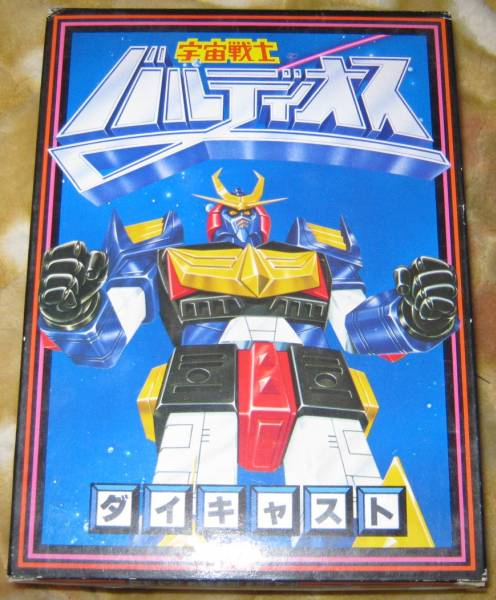Baldios
This is a bootleg of the Nomura ST Baldios… or is it?
In the world of bootleg toys, sometimes things are not what they seem. Sometimes the toys are obvious bootlegs – cheap materials, weird alterations, or lack of copyright or manufacturing information. Other times it’s not so clear as to what is a bootleg and what is just something that has produced for a foreign market. Consider the case of this ST Baldios by AL-ES (Originally by Nomura).



The box is similar to the Japanese release box, but obviously the Japanese text has been removed and replaced with Italian. The logo has been replaced with the English title, but the art for the robot is the same. In the bottom corner is the logo of the manufacturer, AL-ES The text on the front of the box reads:
“COPYRIGHT 1980 TELECINE LTD TOKYO / ZIV INT. USA PER CONCESSIONE DELLA PAC ROMA DISTRIBUTO DALLA DITA AL-ES MONZA”
“Al-Es Monza” was an Italian toy company which specialized in licensing and importing Japanese character goods in the 1980s. They were owned by the Fassi family until 1987, at which time they were acquired by LJN. AL-ES most known in our circles for their Junior Machinders.
The statement above basically says that Telecine and Ziv granted a license to AL-ES to sell these toys in Italy. Ziv International was a company that distributed Americanized versions of Japanese Anime in the late 70s and early 80s. It does not look like they ever released Baldios in the states, but just held the license. It’s a good sign that there’s a copyright statement, but I haven’t been able to find anything about “Telecine Ltd. Tokyo”. The side says “Made in Singapore” but of course the original toy was made in Japan.

At this point – what do you think? Bootleg or not? Lets look at the toy.


Inside, the Styrofoam is the same as the Japanese release, and the accessories are the same.

The toy is basically the same as the JP release. Same paint, same decals, same gimmicks, same build quality. The only difference is the copyright information stamped on the back. Instead of the Japanese text, it simply says “Made in Singapore”

It’s a simple gokin. Diecast chest and legs. Firing fists. There’s a unique disc launcher in the chest behind two doors, and pull-out missile launchers on the legs. All retain the functionality of the original.



To me, the core of a bootleg toy is its unlicensed nature. I don’t see that in this toy. What I see here is a foreign-market version of a toy produced with the same molds in a different factory. There is precedent for this – many Popy diecasts were produced for the European market and made in Singapore. Despite not being made in Japan, they are legitimate releases. One major clue is the box art. Both the Japanese and Italian version use the same basic art, with different text laid over it. The Italian box shows no sign of retouching where the Japanese was removed, meaning whoever produced it had access to the original art. You don’t often see that with a bootleg.
That’s not to say all of AL-ES releases are legitimate, but I think this one is.